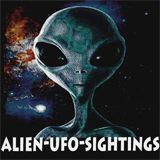Alien Base: The Evidence for Extraterrestrial Colonization of Earth – SECRET US NAVY INVESTIGATIONS
According to information supplied by a navigator who formerly flew many secret strategic reconnaissance missions for the US Navy during the late 1940s and early 1950s, UFOs were the subject of frequent investigations at that time. ‘Back in those days,’ the source told researchers William Jones and Dr Irena Scott, ‘UFOs were considered to be a very important matter.
When the areas of the Soviet Union which were assigned to us were clouded over, we were frequently assigned to fly to various locations around the world to help indigenous personnel conduct UFO investigations. Many of these missions were to South America. There was a lot going on there, apparently.’
These assignments were for specific investigations. According to Jones and Scott: ‘They would fly into the country, pick up a team of investigators and then fly them into the region where the report or reports were to be taken. He said he didn’t learn much about the reports since he spoke neither Spanish nor Portuguese.’
In effect, it seemed that his team acted as ‘truck drivers’ for groups of indigenous military personnel who did not have access to their own aircraft.
The final reports were flown back with them to Turkey [Adana] and then sent back to the Pentagon (apparently not to Project Blue Book) in Washington, DC, through Oslo, Norway. When asked why they were sent via this [unusual] route, he replied, Tor diplomatic purposes.’ They were classified ‘Secret‘ before being forwarded. His group did no analysis of the reports they collected and no information about what they were used for ever came back to them.
AERIAL ENCOUNTER NEAR MOUNT KILIMANJARO
Another aerial encounter took place in February 1951, when the crew and passengers aboard a Lockheed Lodestar of East African Airways observed a ‘bullet-shaped’ flying object near Mount Kilimanjaro, Tanganyika. The object was first seen by the radio operator, Dennis Merrifield, who pointed it out to Captain Jack Bicknell.
As Captain Bicknell reported: The morning was clear and cloudless, visibility was good and the weather perfect. I timed the Saucer for 17 minutes while the Lodestar kept its course.
Twice it rose vertically to a final height of 40,000 feet, then it moved east towards the coast at a terrific speed. There was a large fin-like object attached to the rear, although it wasn’t clearly defined. There was no apparent propelling power [and] definitely no vapour trails.
On landing, Bicknell prepared an affidavit and signed it, together with Merrifield and the nine passengers. One passenger, Captain H. B. Fussell, said that through his powerful binoculars the object appeared to be bullet-shaped. ‘Its colour was whitish-silver with three vertical black bands down the side,’ he reported. ‘For 10 minutes it remained stationary, then it suddenly rose vertically by 5,000 feet.
Again it became stationary, and then a minute later it rose again and moved laterally away at a great speed . . . the object was definitely metallic.’
Another passenger, Charles Vernon, said that the object must have been immense, ‘two or three times the size of the largest passenger plane’ Investigator Waveney Girvan learned that a tine film of the object had been taken by an American passenger, a Mr Overstreet, who had taken his film to the ‘authorities’ in the United States. Efforts to locate Overstreet or a copy of his film proved fruitless.
